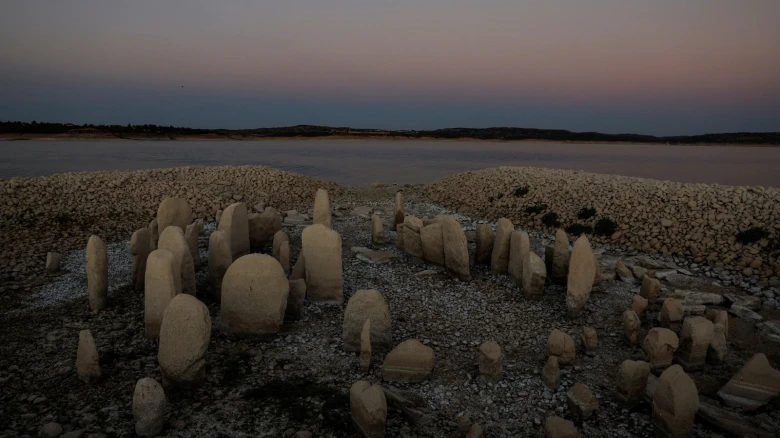Regional

Authorities claim that the water level has decreased to 28% of capacity in the Valdecanas reservoir in the central province of Caceres, where it is currently entirely exposed.
Digital Desk: The country's
worst drought in decades has devastated rural Spain, but one unexpected result
has excited archaeologists: the appearance of a Neolithic stone circle in a dam
whose waterline has retreated.
The circle of several
megalithic stones also referred to as the Spanish Stonehenge and officially
known as the Dolmen of Guadalperal, is thought to have existed around 5000 BC.
Authorities claim that the
water level has decreased to 28% of capacity in the Valdecanas reservoir in the
central province of Caceres, where it is currently entirely exposed.
One of the specialists is rushing to study the circle before it is re-submerged said archaeologist
Enrique Cedillo of Madrid's Complutense University, "It's a surprise, it's
a unique occasion to be able to access it."
Hugo Obermaier, a German
archaeologist, first discovered it in 1926, but under Francisco Franco's
dictatorship, the area was submerged in 1963 for rural development.
Only four times have
complete visibility occurred since then.
Dolmens are vertically
stacked stone structures that often support a flat boulder. Numerous ones are dispersed around Western Europe, but little is known about who built them.
Many people believe that many are tombs as a result of human remains discovered
within or close to them.
The Guadalperal stones
should be relocated to a museum or another location on dry land, according to
local historical and tourism organizations.
Additionally, the fact that
they are there is good news for Ruben Argentas, who runs a small boat trip
company. After a full day of transporting visitors to the site and back, he
told Reuters that "the dolmen appears and the dolmen tourism begins."
However, there is no bright
spot for nearby farmers.
"Since the spring,
there hasn't been enough rainfall. The livestock must be transported inside
because there is no water for them "Jose Manuel Comendador said. Rufino
Guinea, another, claimed that his crop of sweet peppers had been destroyed.
According to a study
published in the Nature Geoscience journal, the Iberian peninsula is now at its
driest point in 1,200 years, and winter showers are predicted to become even
less frequent.
Leave A Comment